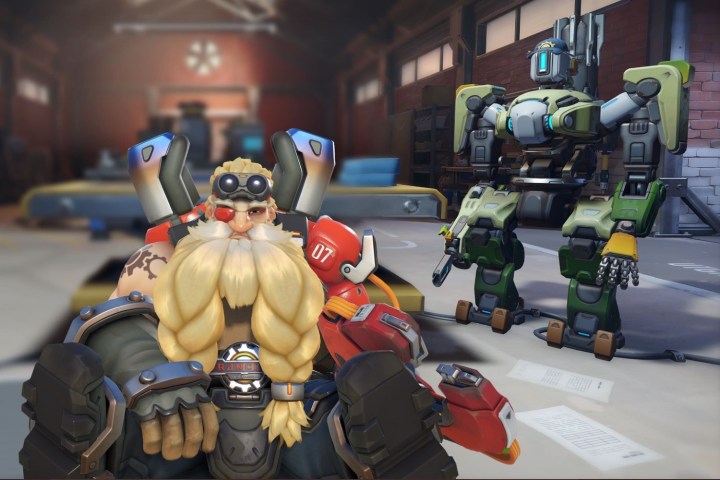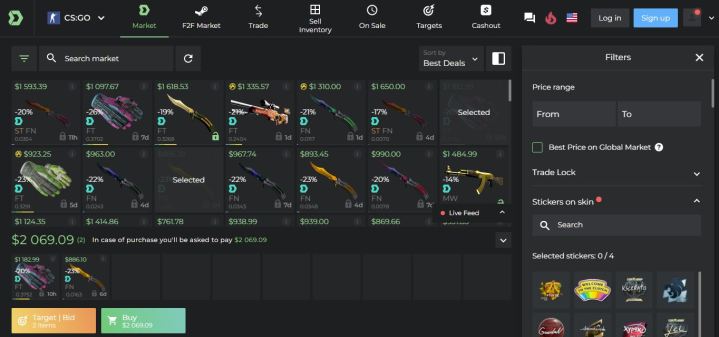In 2023’s most surprising news so far, Counter-Strike 2 is coming. The competitive shooter isn’t just a follow-up to the massively popular Counter-Strike: Global Offensive, but an upgrade to that game using the new Source 2 engine. A beta is already underway, with the full game scheduled to come sometime this summer. With how Valve is handling the project, I can’t help but think of how Blizzard rolled out its own recent shooter sequel: Overwatch 2.
Both games are highly popular, competitive, and live-service style games with a heavy emphasis on cosmetics for monetization that have highly dedicated communities. The biggest similarity — and also criticism in the case of Overwatch 2 — is the fact that both sequels retroactively replace their predecessors, forcing everyone to upgrade to the sequel whether they want to or not. This is a relatively new concept in gaming, where older versions of online games become entirely inaccessible and Overwatch 2 didn’t inspire a lot of confidence in it being a beneficial trend. That said, Counter-Strike 2 is already in a perfect position to succeed in all the ways Overwatch 2 failed.
If it ain’t broke
In normal circumstances, a sequel is a developer’s opportunity to iterate and make alterations to the core of the game that came before. Obviously, there’s a limit to how big these changes should be — a shooter shouldn’t suddenly become a 2D fighting game — but a combination of new features being added and old ones being removed is expected. That becomes a much trickier proposition in this new age of sequels where the new version is the only option. In the case of Overwatch 2 and Counter-Strike 2, players don’t have the luxury of being able to keep playing the old version they loved.

Overwatch 2′s biggest change was shrinking team sizes to five. Regardless of whether or not you felt that change was positive or negative, it had a major impact on every aspect of the game, including team composition, hero balance, strategy, and how maps functioned. It was a fundamental change that instantly segmented the community.
Counter-Strike 2, from what is known, isn’t falling into that trap. Team sizes aren’t being altered, and the sharply tuned balance of the game isn’t being messed with in any major ways we know of. The changes that have been announced include improving the game’s performance, graphical style, and a revamped smoke system. While art style and graphics are subjective, what people play Counter-Strike games for — the fast, tactical FPS action — will be preserved.
The monetization game
Another leg-up Counter Strike 2 has over Overwatch 2 is that it already went through any of the growing pains of transitioning from a paid title to a free-to-play game. Despite Overwatch already coming under fire for its loot-box systems, it never got rid of them until the sequel. What replaced them, though, was arguably worse. Chasing the trends of Battle Royale games, Overwatch 2 went with a battle pass system that isn’t so friendly to non-paying players. New heroes can be obtained for free in battle passes only after a lengthy grind. To skip it, players will have to pay up, putting pressure on those who want to keep up with the shooter’s evolving meta.

While it’s not exactly a “pay-to-win” move, this change is about as close as we’ve seen in a recent, big-budget game. Overwatch 2 lives and breathes based on the interactions between its heroes, and even though non-paying players still can grind their way to new heroes, it won’t matter in those first days when people willing to pay simply unlock them right away.
Counter-Strike 2‘s monetization system solely revolves around skins, with no reward systems of any kind tied to progression. It can do this mainly thanks to the foundation of the game which lacks individual “characters” or skills, and instead places all players on equal footing in each game. Every weapon is available to every player for free (not counting the in-game cost to buy it, of course), leaving little to no reason for any type of battle pass. Much like the gameplay, all Counter Strike 2 really has to do is not mess up the system they have in place and there’s no indication it’s in any danger of that currently.
Playing the long game
Many of Overwatch 2‘s current woes come down to messaging struggles and a slower-than-expected rollout of content. Overwatch 2 was hyped up to be the next chapter in the Overwatch universe, with tons of new content, heroes, maps, and even a PvE mode. To date, only four new characters were added (three at launch and one in the seasons since), no new maps, and still no PvE mode.
That’s a stark contrast to how Valve handled its own sequel. The developer has kept this project a secret as close as possible until launch, only letting details out when it began running a beta. Even then, expectations have been made very clear: Counter-Strike 2 is the same Counter-Strike you know and love, but will run and look better.
So long as that remains true, Counter-Strike 2 should be able to continue its championship reign in the competitive shooter genre.



